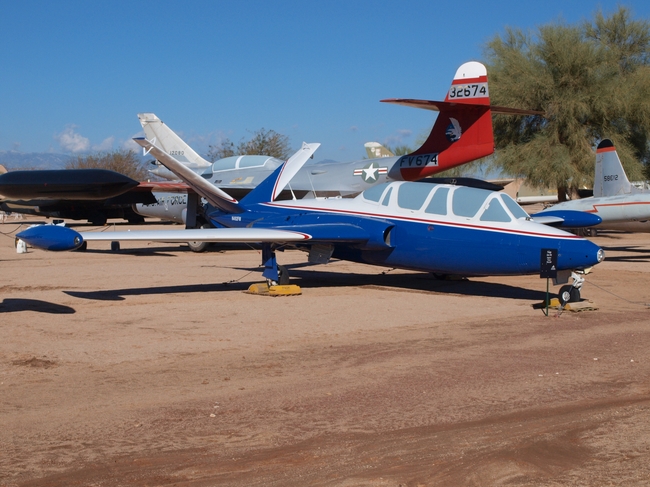Manufacturer:
FOUGAMarkings:
Civilian Markings, 2013Designation:
CM.170Registration:
N492FMSerial Number:
492The Fouga Magister was designed in response to a French Air Force need for a jet trainer in the late 1940s. An earlier trainer had proven to be underpowered and the new requirement called for more powerful engines to be fitted. In 1950 Fouga enlarged the earlier design and added the Turbomeca Marbore engine. The plane’s most distinctive feature its “V”-tail came from the glider that Fouga had fitted with a jet engine for testing. The Magister first flew in 1952 and entered service with the French Air Force in 1956. Its success resulted in large numbers of the aircraft being sold to other air forces around the world and eventually twenty-three nations would make use of the Magister. In addition to being built in France Magisters were license built in West Germany, Finland, and Israel. In all 929 were constructed. After the Magister was retired a number of them found their way into civilian hands, particularly in the United States.
Service History
This is the 492nd Magister built. It was delivered to the Armee de l’air in February 1966. It was assigned to training units in the Provence region of France until the mid-1970s. After retirement from the French Air Force the aircraft was sold to a private owner in the United States. In 2013 it was donated to the Pima Air & Space Museum.
Specifications
- Wingspan: 39 feet 10 inches
- Length: 33 feet
- Height: 9 feet 2 inches
- Weight: 6,280 pounds
- Max. Speed: 444 miles per hour
- Service Ceiling: 36,080 feet
- Range: 575 miles
- Engines: Two Turbomeca Marbore IIA turbojets with 880 pounds of thrust each
- Crew: 2
